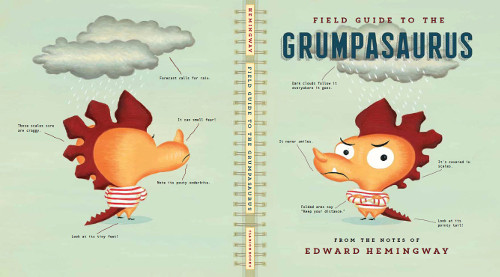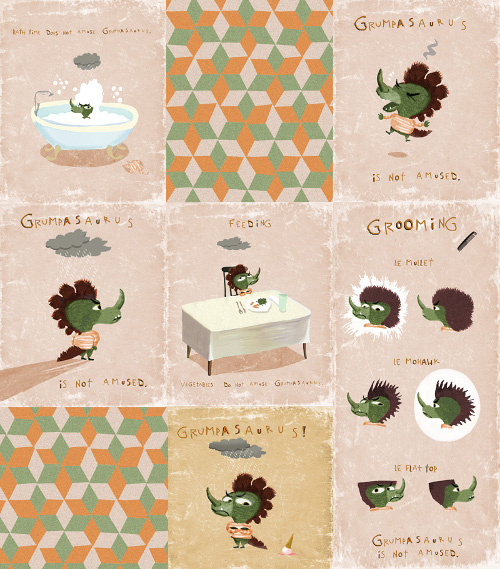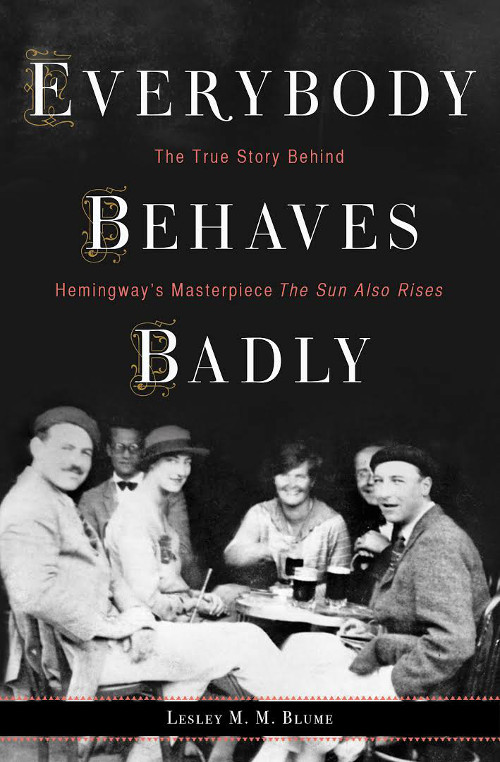Catching Up with Edward Hemingway
 October 25th, 2016 by jules
October 25th, 2016 by jules

Pictured above is a study, painted in oil, of the cat from Edward Hemingway’s Field Guide to the Grumpasaurus. This study, Edward says, helped him create the final color palette for the book.
Grumpasaurus, which Kirkus described as an “effervescent how-to for the wrangling of fearsome, tantrum-prone beasties,” was released by Clarion back in June, and around that time Edward and I talked about him visiting 7-Imp. But a move to a new home this summer delayed my plans. Mr. Hemingway was very patient with me, though, and I’m glad he’s finally here today. Also released this past Summer was F. L. Block’s My Miserable Life (Henry Holt), for which Edward created the cover and interior illustrations.
We talk about both books below, as well as what’s next for him. (I also asked for some book recommendations and was rewarded.) I thank him for visiting. Let’s get to it.
Jules: Grumpasaurus speaks to me, because it takes me a while to wake up. And cheer up. What was the origin for this story? When’d the idea come to you and did you go through lots of drafts or know exactly where you wanted the story to take you?

(Click to enlarge)
Edward: I first heard the term “Grumpasaurus” several years ago, used to affectionately describe a friend’s tantrum-prone niece. I loved the word, and it immediately became a common go-to in my vocal lexicon. I think the term appeals to me so much, because it puts a playful label on negative feelings and behavior and, in doing so, negates or diffuses some of the darker emotions at work. It’s important to bring some levity to the table when we take small slights or anger-inducing actions to heart. Mark Twain once wrote, “The secret source of humor is not joy but sorrow: there is no humor in heaven.” So down here on earth we often need to make light of our sad or angrier moments. In my humble opinion, the earlier in life we start doing this, the better. So I was inspired to write the book with that in mind. The field guide framing device came a little later, after several drafts.

when I was sketching and creating the character”
(Click to enlarge)
Jules: The book says the illustrations were done in “oils on panel.” For a non-artist like me, can you translate that? Does that mean they were painted on wood of some sort?
Edward: I love to paint on a hard, flat surface, when possible, and the panel is simply a wood composite panel you can buy at any decent art supply store. I guess I like that the finished original artwork feels more like an object than when I paint it on a traditional canvas.

(Click to enlarge)
Jules: Were you given freedom in F. L. Block’s My Miserable Life to illustrate whatever moments you were compelled to illustrate? (Seven points for “Dustin Peeper.”)

Edward: Ha ha, I love Dustin Peeper!
Yes, I had total freedom to come up with all and any moments in the book I wanted to illustrate. It was hard deciding the specific spots, as Francesca provided so many compelling scenarios and characters in the book. What drew me to the text was it’s realistic and often dark portrayal of a kid’s emotional state at that age, combined with a very modern and sly sense of humor, which I wanted to stay true to with my silly drawings.
I’m also a superfan, so it was a thrill for me to do on every level.

(Click to enlarge)
Jules: How’s life in the Brooklyn studio with your illustrating companions?
Edward: You’ve got to come visit us again!
I can’t tell you how nice it’s been to share a studio with Sophie, Johnny, Brian, and Sergio these last several years. It really is like the coolest clubhouse you’d ever want to join — with the nicest, most talented bunch of people letting down the rope ladder every day. Making books is by nature a pretty solitary existence, but when you do it in the same space with four amazing artists, your day to day is anything but lonely. And we always have lunch together.

(Click to enlarge)
Jules: What you have been reading lately (for children or even adults) that you recommend?
Edward: What a great question.
I just finished Kanye West Owes Me $300 by Jensen Karp (a.k.a. Hot Karl) and would recommend it to anyone who likes ’90s pop culture and music bios. It’s hilarious and a little sad.
I’m currently reading Everybody Behaves Badly, which is about my grandfather during the time he wrote The Sun Also Rises and was given to me by its author, the lovely Lesley Blume.

Jules:Oh! I loved her Modern Fairies, Dwarves, Goblins, and Other Nasties! (I posted about it here at 7-Imp in 2010, some art from David Foote included.)
Edward: And the last kids’ book I purchased and read was Also An Octopus by Maggie Tokuda-Hall and illustrated by Benji Davies. Do you know it? It’s a beautifully illustrated story about the importance of stories and storytelling.

Jules: Yes, I’ve seen it! Good stuff. “Music is good for the heart.” My favorite moment. My favorite line.
What’s next for you? Can you tell me about Mr. Fuzzbuster and/or any other new projects?
Edward: Up next for me is Mr. Fuzzbuster Knows He’s the Favorite by Stacy McAnulty. It’s a very funny text about pets playing favorites, and I was especially delighted to get to illustrate a book that not only featured a cat, but also a bird, lizard, goldfish, and puppy dog.







I’m currently working on finishes for a book I wrote and illustrated, called Tough Cookie, all about a Christmas Cookie that finds out he tastes terrible and may not actually, in fact, be a cookie at all. Hilarity ensues. It’s fun to be working on a holiday book, and I can’t wait for this one to make its way into the world. It’s really colorful and filled with delicious characters and Christmas cheer. I think kids of all ages are going to dig it.

(Click to enlarge)


(Click either image to see spread in its entirety)
Jules: Looking forward to it. Thanks for visiting, Edward!
Edward: Thanks, Jules!
All images used by permission of Edward Hemingway.

Mr. Fuzzbuster Knows He’s the Favorite looks particularly hilarious.